#antilopinae
Text
Wtf antelopes are cows
0 notes
Note
Hi! I saw your post about the tiefling and wanted to ask: is a shofar from a dragon or an extinct animal, like a ram's ancestor, kosher?
Oh! This is a fun one.
Starting with the easier one -the ancient proto-sheep. But first, I would like to note that I am neither a biologist nor a rabbi, and while I have consulted (albeit minimally) with both for the making of this post, I am not the best source. I can provide links to some useful reading, but tumblr being tumblr, with the link-eating that that entails, I will not be putting the links in the post itself.
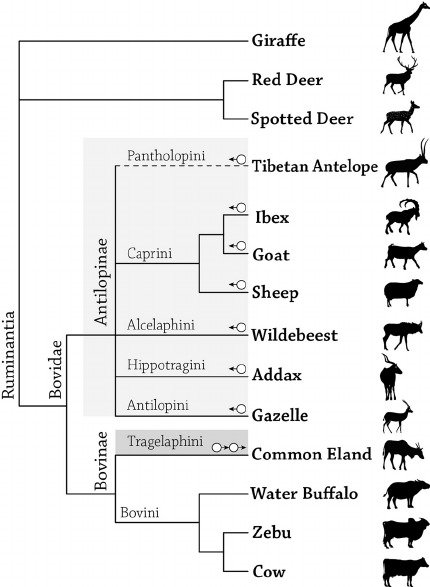
This is the family tree map of the suborder Ruminantia.
As previously established, sheep are valid sources for a shofar. So too are goats and ibices (if I'm going to pretend to be scholarly, I'm going to use the technically-correct Latin plural) -the mishna even specifically addresses ibex horn as a possible source. Thus if our proto-sheep is still within tribe Caprinae, it is a valid source for a shofar.
What I did not address on the other post is that kudu (and gazelles, oryxes, etc) are also acceptable source animals for shofars. Antelopes, like bovines and caprines, have horns, rather than antlers. The requirement for the shofar is that it be a horn, not a bone -that the bone be covered with a keratin sheath. We can thus move further backwards, and authorize any ancestor still within sub-family Antilopinae.
And here is where we need to take a step out of modern science. The laws of kashrut predate genomics, and are often more rooted in morphology than phylogeny. A whale is not an unkosher animal, it is an unkosher fish, because it is fully aquatic. A bat is not an unkosher animal, it is an unkosher bird, because it is a warm-blooded flying creature.
Halachically speaking, if it looks like a cow and acts like a cow, and has the general criteria we associate with a cow, it's a cow. And cows are not acceptable source animals for shofars.
So if we move further back and reach a common ancestor in the family Bovidae, whether it's an acceptable source for a shofar depends on how cow-shaped it is. An aurochs, for instance, is a cow. While I was unable to find any sort of artistic rendering of the presumed last common ancestor at the divergence of Bovinae and Antilopinae, the earliest bovid I could find was Eotragus sansaniensis, which definitely seems closer in shape to an antelope than a cow. It is thus theoretically possible that an ancestral species in Bovidae might be permissible, with more cow-shaped bovines being specifically set aside from the rest of their family -in much the same way that we colloquially apply the term "reptile" to all non-bird modern diapsids. If that is the case, we would then move backward to the last common ancestor of bovines and cervines in suborder Ruminantia. (We might then be able to move forward along the deer tree until antlers diverge from horns, but that is not an ancient sheep, it's an ancient deer.)
We've got our rules on animals. Now we look at the shofar itself. Optimally, the shofar is curved, rather than straight. A straight shofar meets the technical requirements, but if you want to be as stringent as possible, a curved shofar is better. (That said, eland and gemsbok shofars are incredibly striking.) Per the mishna, even ibex horns are considered too straight to count as curved for this particular discussion -and ibices are specifically discussed as an acceptable source. (We used to use shofars for more purposes than we do today. There was a discussion about when to use the straight one vs the curly.)
Now, given that the shofar-making process usually involves some degree of straightening it in order to hollow out the mouthpiece, there is room for debate here. There are those communities and individuals who prefer striking or resonant shofars, and thus accept the larger ones obtained from various antelopes. There are also those communities that ban even a minimal amount of straightening of a ram's horn. Once we're arguing specific stringencies with common precedent for the lenient opinion, though, I think we can say we're in the clear for permissibility.
However. The previous post mentioned the issues with lacquering and otherwise decorating a shofar, which gets into another concern. Namely, the horn being used cannot possess any cracks or breaks from the end of the mouthpiece until one is past the minimum required length for a shofar.
And, unfortunately, old bones that have been around for millennia tend to have some wear and nicks on them, often of the sort that would invalidate a shofar for use.
So in conclusion, one can use the horn of any proto-sheep still within Ruminantia, unless they were too cow-shaped before diverging within Bovidae, in which case, one can use the horn of any proto-sheep within Antilopinae. But it must have either been phenomenally well-preserved, or the proto-sheep must have lived close enough to contemporaneously with the maker of the shofar that the horn has not sustained damage in the interim -ie, this must be a story involving time travel, cloning, or some sort of alternate history situation.
This is long enough already, so I will reblog with my thoughts on dragons in a separate post.
#my biologist consultant has requested that I point out that there are extinct non-diapsid reptiles#but recognizes the point I am making#my rabbi consultant is just amused by the discussion#Silamy likes to ramble#longpost#speculative halacha
22 notes
·
View notes
Text
how I would redefine the "antelopes" if I could control it.
These first two groups are closer to cattle than the others
nilgai are nilgai, 4-horned antelope now go by the local name Chousingha, or dwarf nilgai if we need to talk about these two together as "nilgai'.
Spiral-horned antelope are now "dualicorns" or Tragelaphs, (Tragelaph's being mythical goat/deer hybrids they get their name science name from) depending on your level of whimsy. Mountain nyala are now balbok. Lesser Kudu I'm now gonna call the Mose's Tragelaph for being native to both sides of the red sea.
The following groups are progressively close to goats
impala are just impala
Suni, are now eastern Suni, bate's antelope is western Suni.
the Antilopinae (gazelles and close relatives) get to stay antelopes. gazelle taxonomy is a mess right now so if gazelle is paraphyletic let's just widen what is an gazelle.
If you want, we can keep calling the duikers and the Klipspringer antelopes to, your call. No real opinion either way.
I don't have a great name for the Reduncinae, Reduncins? pondbucks? backwardsbucks? Either way 2 of 5 species in the genus Kobus are lechwe and they don't seem to be particularly related so now I'm calling all the Kobus members lechwe's.
the alcelaphinae (Tsessebe, hirola, hatebeest, both wildebeest species, bontebok) are now all beests, or bests, I like the idea of a group of animal's simply called "beasts" but best might lessen confusion. The grazing-antelopes I could call "Hipotrags" but that doesn't feel catchy enough, instead I'll create a pormantaue based on their facila markings of "badger " "hart"( an archaic term for doe) and get "badgehart" the Swahili name for Sable antelope, mbarapi, is sometimes used in English, so now Sable antelope's are sable mbarapi and roan antelopes are roan mbarapi, and the extinct bluebuck is blue mbarapi for good measure.
we don't need the term goat-antelope, anything closer to a sheep than a wildebeest is now just called a Caprine. Tibetan antelope are now only by the local name Chiru.
I wanted to use a native word for the Rocky Mountain goat but had trouble, so for now it's the american takin and the Takin is the asian takin, we can call the extinct species Harrington's Takin. Myotragus can just be Myotragus instead of Cave-goats.
Barbary Sheep are now just Aoudad, 3 unrelated species are "Tahr", Himalayan Tahr had it first so now they're just Tahr. for Nilgiri Tahr I'll take their Tamil name Varaiiadu. I can't find the local name for the Arabian Tahr so for now it's the Eastern Aoudad,
Bonus! "deer"!
Musk deer are the sister group to bovids, I really honestly like the genus name Moschus, I think it's catchy enough to double as a common name. The sister group to those two, the Chevrotians, or mouse-deer, stay Chevrotians.
0 notes
Text
Animal practice 26

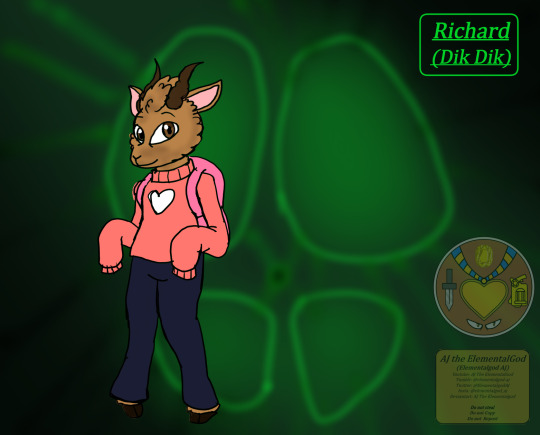
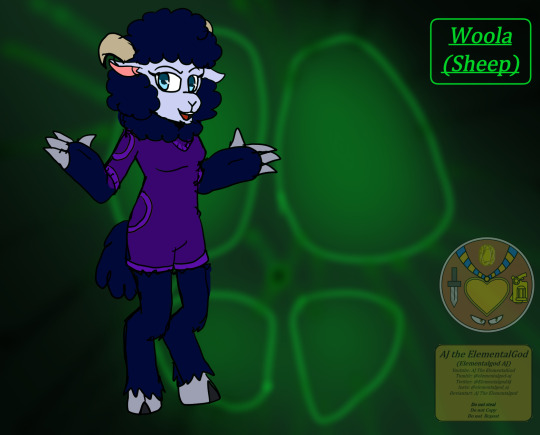
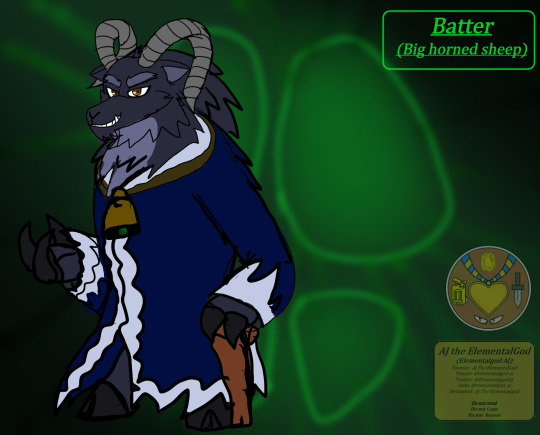
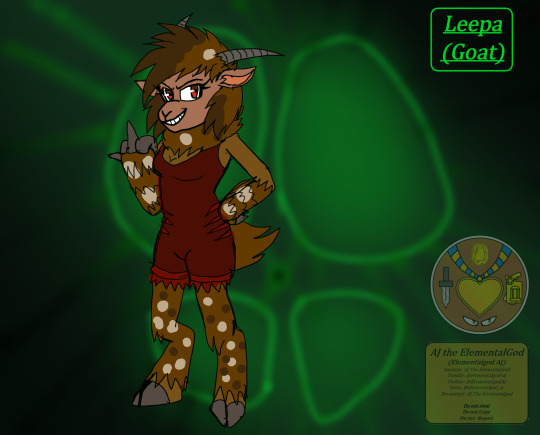
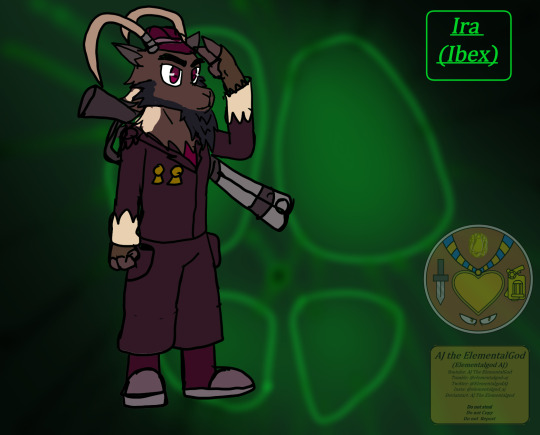

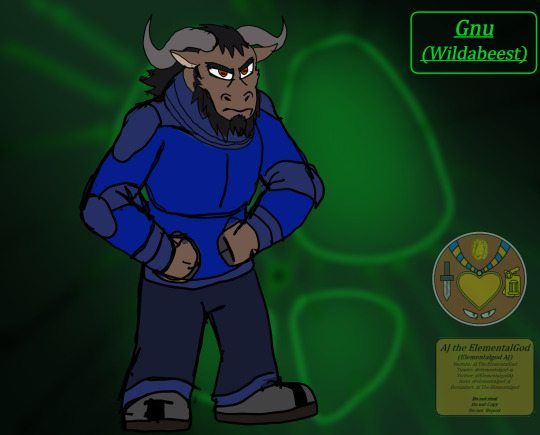


Mammal 10
Ungulates 2
Even toed Ungulates 3
Bovidae
Aepycerotinae/Antilopinae
Gabrielle (Impala/Antelope/Gazelle)
Richard (Dik Dik)
Caprinae
Woola (Sheep)
Batter (Big horned sheep)
Leepa (Goat)
Ira (Ibex)
Hippotraginae/Grazing antelope
Francine ( Oryx/Gemsbok)
Alcelaphinae
Gnu (Wildebeest/ Hartebeest)
Bovinae
Clara (Bison/yak/cattle)
Tatanka ( Water buffalo)
#the watchful eye#watchful eye#my art#my oc#my ocs#elementalgod aj#aj the elementalgod#isle 0#toonverse oc#o'kong family#neo demons#earthdemons#anthro allies#ungulates#Impala#Antelopes#gazelle#dik dik#sheep#big horned sheep#goat#ibex#oryx#gemsbok#wildebeest#hartebeest#cattle#yak#bison#mammals
1 note
·
View note
Photo
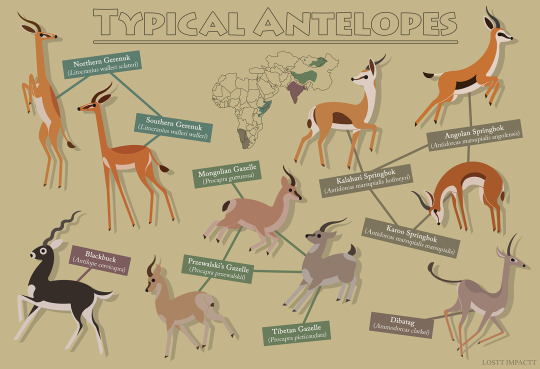

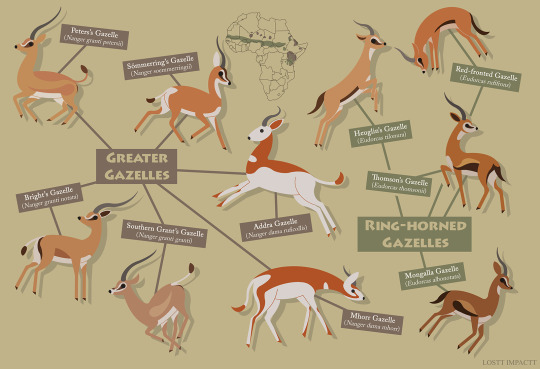
Bovidae (Antelopes, Cattle, and Goat-Antelopes)
*not every single recognized species and subspecies is represented because some i could find zero information on, let alone pictures
*common names are taken from the IUCN red list if applicable and iNaturalist (and very rarely wikipedia)
*idk how far i’ll go with this cause there’s a LOT of animals
#art#antelope#gazelle#bovidae#thomson's gazelle#springbok#blackbuck#gerenuk#gazella#nanger#eudorcas#antilopini#antilopinae
74 notes
·
View notes
Photo

Saiga antelope (Saiga tatarica)
Photo by Igor Shpilenok
#saiga antelope#saiga tatarica#saiga#saigini#antilopinae#aegodontia#bovidae#pecora#ruminantia#cetruminantia#artiofabula#artiodactyla#scrotifera#laurasiatheria#boreoeutheria#eutheria#mammalia#tetrapoda#vertebrata#chordata
228 notes
·
View notes
Photo
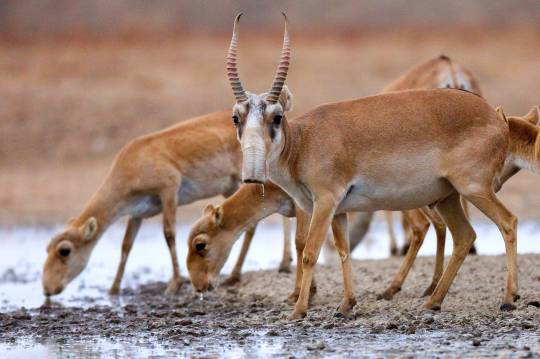
Saiga antelopes at the Stepnoi nature reserve in Liman district of Russia’s Astrakhan region. The site was created in 2000 especially for saiga antelopes
Photograph: Dmitry Rogulin/TASS/Getty Images
(via The week in wildlife – in pictures | Environment | The Guardian)
#Saiga tatarica#Saiga#Antilopini#Antilopinae#Bovidae#Ruminantia#Artiodactyla#Mammalia#mammal#antelope#endangered#Russia
40 notes
·
View notes
Photo

2 notes
·
View notes
Photo

A male Thomson’s Gazelle (Eudorcas thomsonii) walks by, the vast savanna behind it. Via Snapshot Safari
0 notes
Photo

SPEKE'S GAZELLE Gazella Spekei ©Laura Quick The Speke's gazelle is the smallest of the gazelle species. It is confined to the Horn of Africa, where it inhabits stony brush, grass steppes, and semideserts. Its numbers are under threat, and despite an increase in population, the IUCN in 2007 announced its status had changed from vulnerable to endangered. A captive population is maintained, and the wild population exists in the lower tens of thousands. As of 2008, this gazelle is classified as endangered under the IUCN Red List. The Speke's gazelle's "schnozz" actually has an important purpose: it is partly responsible for the animal's loud alarm call. By inflating the loose skin on the top of its muzzle, the gazelle can increase the volume of its call, which resembles a honking sound. #spekesgazelle #gazellaspekei #©lauraquick #gazelle #antelope #southafrica #africa #endangered #artiodactyla #bovidae #antilopinae #gazella #nature #animal #losangelesphotographer #losangeleszoo #naturephotography #lazoo #losangeleszooandbotanicalgardens #docentclass #graceful #honking #schnozz #nose #beautiful https://www.instagram.com/p/B8u9AyYHdFk/?igshid=ldcpbzqehhoy
#spekesgazelle#gazellaspekei#©lauraquick#gazelle#antelope#southafrica#africa#endangered#artiodactyla#bovidae#antilopinae#gazella#nature#animal#losangelesphotographer#losangeleszoo#naturephotography#lazoo#losangeleszooandbotanicalgardens#docentclass#graceful#honking#schnozz#nose#beautiful
0 notes
Photo

Masks are now available on @redbubble and I've sold a few. The latest is this Ernst Haeckel print of Antelope. These cloth face masks are for general public use only. They are not intended for use in medical settings. For every mask sold, Redbubble will be donating a mask to @heart.to.heart.international . Heart to Heart International works with volunteers, partners, and donors to make healthcare more accessible. They have launched international, domestic, and local responses to COVID-19. #antilopinae #antelope #deer #dikdik #gazelle #blackbuck #pronghorn #springboks #springbok #antilope #saigas #gerenuk #zoology #steenbok #bok #bovidae #pronghornantelope #antelopes #pronghornantelope #exoticgame #impala #greaterkudu #eland #kudu #nyala #masksforsale #waterbuck #addax #klipspringer #myrbthing #redbubble Hey! You can use my code RBC-B15LRD3V at checkout to get 15% off your entire purchase at Redbubble! — view on Instagram https://ift.tt/2WA27Oe
0 notes
Photo
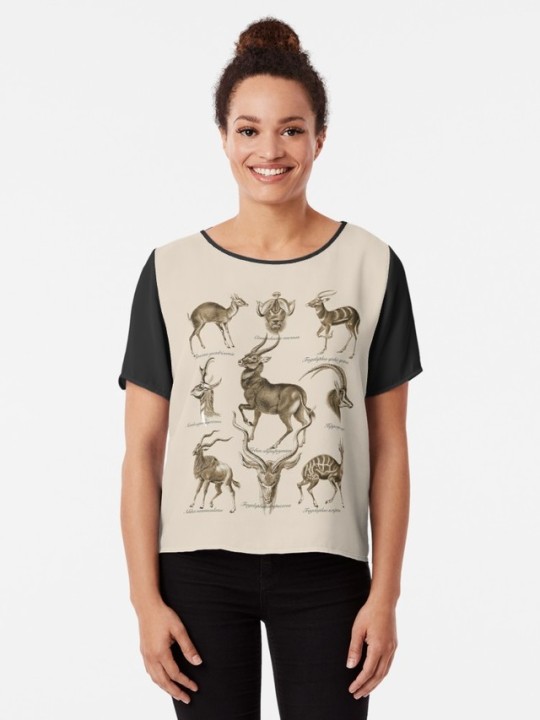
(via 'Antilopina. the subfamily (now Antilopinae, family Bovidae) of gazelles.' Chiffon Top by Squirrox)
0 notes
Text
ANTİLOPLAR (Antilopinae)
ANTARKTİKA
Alm. Antilopen (f), Fr. Antilopines, İng. Antelopes. Familyası: Boynuzlugiller (Bovidae). Yaşadığı yerler: En çok Afrika ve Güney Asya. Özellikleri: Geviş getiren, halkalı boynuzlu, zarif vücutlu, iyi koşucu hayvanlar. Ömrü: 10-12 sene. Çeşitleri: Keseli, kara, su, orman antilopları, ceylan ve impalalar meşhurlarıdır.
Çift tırnaklı, geviş getiren, zarif ve…
View On WordPress
0 notes
Photo
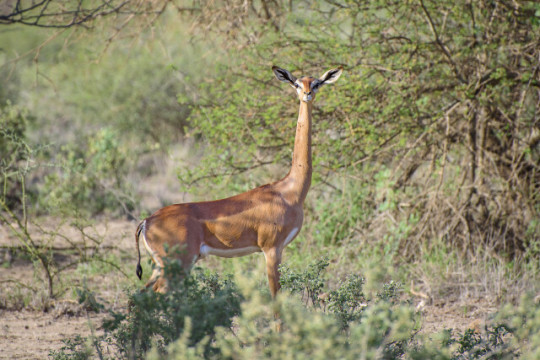
Southern gerenuk (Litocranius walleri walleri)
Photo by Cláudio Dias Timm
#southern gerenuk#gerenuk#litocranius walleri walleri#litocranius walleri#litocranius#antilopini#antilopinae#aegodontia#bovidae#pecora#ruminantia#cetruminantia#artiofabula#artiodactyla#scrotifera#laurasiatheria#boreoeutheria#eutheria#mammalia#tetrapoda#vertebrata#chordata
58 notes
·
View notes
Text
I’ve seen the sheep & goats post a lot both on here and on facebook the last few days, and I’ve made the terrible mistake of trying to read molecular phylogeny literature. Highlights of me trying (and probably failing) to grok academicese include:
•The thesis that sheep and goats were speciated by human domestication isn't true, but the literature disagrees about how wrong it is. This paper seems to put the goat/sheep common ancestor at about 15 million years ago based on a gene in mtDNA variations, but this paper cites 5-7 million years ago based on fossil evidence. The younger estimate puts the divergence close to a human-gorilla divergence, but the older one is closer to a human-gibbon divergence.
•The problem of not knowing whether bones are sheep or goat bones isn't unique to archaeology, though, since this paper seems to say that there aren't any good systems for classifying extinct sheep and goat species based on shared fossil characters--except when it comes to the metacarpals, which are much shorter in goats than in sheep & cows, allowing them to do goat things
•Ötzi's loincloth was made from a sheep that was a lot like every modern European sheep but with a few mtDNA polymorphisms that aren't found in European sheep today. What's really important, though, is that when the same lab sequenced Ötzi's DNA, they gave his weird mtDNA haplogroup a metal umlaut
(did I misinterperet everything I read? probably!)
1 note
·
View note